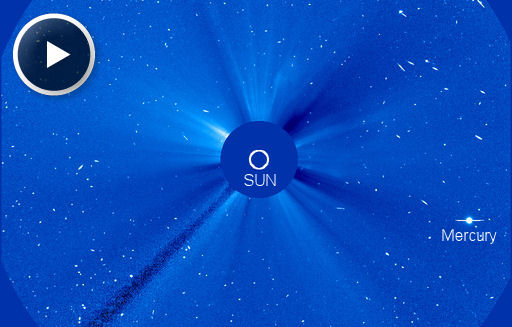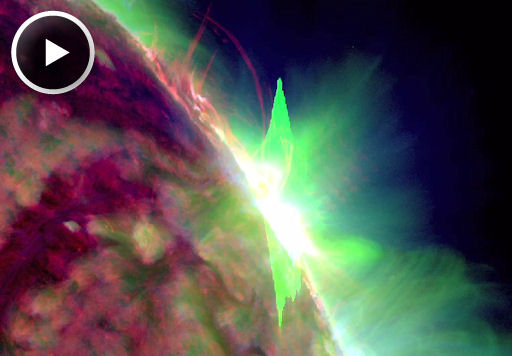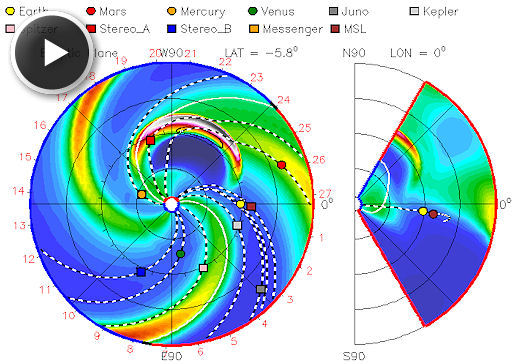На Солнце произошла первая в 2012 году вспышка высшего балла X2
30-01-2012, 08:05. Разместил: VP
На Солнце произошла первая в 2012 году
|
|||
|
Активная область 1402, расположенная в северном полушарии Солнца и ставшая источником самого крупного за последние несколько месяцев всплеска солнечной активности, в ночь с 27 на 28 января произвела новую крупную вспышку высшего рентгеновского балла X. Начало события было зарегистрировано около 21:30 по московскому времени; максимальную силу вспышка достигла в 22:37 мск, а последние возмущения на Солнце исчезли только в середине сегодняшнего дня 28 января. Потоки рентгеновского излучения на орбите Земли (один из основных индикаторов вспышки) во время события были увеличены примерно в 200 раз. Точный балл вспышки, измеренный в точке максимума, составил X1.7. Таким образом, это крупнейшая солнечная вспышка этого года. В целом, события высшего уровня X не являются чем то исключительным для текущей стадии солнечного цикла. Солнечная активность уже второй год находится в состоянии роста и, как ожидается, достигнет максимума в конце 2012 — начале 2013 года. В прошлом году за 12 месяцев было зарегистрировано 8 вспышек балла X, самой крупной из которых стала вспышка X6.9 от 9 августа 2011 года. До этого, однако, в течение четырех лет, с 2007 по 2010 год, таких вспышек не было вообще. Соответствующий период пришелся на один из самых глубоких в истории спадов активности Солнца, нижняя точка которого была пройдена в первой половине 2009 года. Исключительно сильными считаются вспышки, начиная с балла X10. С 2000 года Солнце произвело 6 таких вспышек. Рекордной из них пока является вспышка уровня X20, зарегистрированная 2 апреля 2001 года — в год предыдущего солнечного максимума. Сможет ли Солнце побить этот рекорд в момент нового максимума станет понятно в ближайшие 1-1.5 года. Область 1402 в настоящее время находится на западном краю Солнца: все области на Солнце из-за его вращения перемещаются от его левого, восточного края, к правому, западному примерно за 2 недели. На середине этого пути каждая область несколько дней находится вблизи линии Солнце-Земля, откуда способна влиять на Землю. Для области 1402 этот период пришелся на 18-23 января, когда она произвела два выброса плазмы, приведших к двум первым магнитным бурям этого года. Обе бури, впрочем, были минимальной силы, так как в обоих случаях центральные наиболее плотные области выбросов прошли на удалении от Земли. Так как новая вспышка произошла в момент, когда активная область находится на самом краю Солнца, то ее воздействие на Землю будет минимальным. К Земле должны прийти (а точнее, уже пришли) потоки излучения и частиц. Выброшенные же из области взрыва облака плазмы, осуществляющие наиболее сильное радиационное и ударное воздействие на тела солнечной системы, пройдут мимо нашей планеты. С большой вероятностью после прошедшей серии взрывов Солнце на 1-2 недели погрузится в "спячку", так как с одной стороны ему необходимо время, чтобы восстановить израсходованную свободную энергию, а с другой в настоящее время в принципе, не видно новых крупных активных областей, способных производить в ближайшее время сильные взрывы и выбросы плазмы. |
|||
|
Лаборатория рентгеновской астрономии Солнца (ФИАН) |
RADIATION STORM: Accelerated by Friday's X-flare, energetic protons from the sun are still swarming around Earth on Jan. 29th. The radiation storm ranks S2 on NOAA scales, which means it is not a severe storm. Nevertheless, it can still affect spacecraft and satellites at the nuisance level. Click on the image for an animated demonstration:
That was a coronagraph image from the Solar and Heliospheric Observatory (SOHO). The many speckles and streaks are energetic protons striking SOHO's onboard digital camera. Stronger radiation storms (S4 to S5) can fill images like these with "snow," rendering them useless for normal operations. The current storm will probably subside later today and restore SOHO's clear view of the sun.
FRIDAY X-FLARE: Departing sunspot 1402 unleashed an X2-class solar flare on Jan. 27th at 18:37 UT. NASA's Solar Dynamics Observatory recorded the extreme ultraviolet flash:
Sunspot 1402 is rotating onto the far side of the sun, so the blast site was not facing Earth at the time of the explosion. Nevertheless, energetic protons accelerated by the blast are now surrounding our planet, and an S2-class radiation storm is in progress.
The explosion also produced a spectacular coronal mass ejection (CME). A movie from the Solar and Heliospheric Observatory shows the cloud racing away from the sun at 2500 km/s or 5.6 million mph. Work by analysts at the Goddard Space Weather Lab shows that the CME will just miss Earth when its edge passes by our planet on Jan. 30-31. Click to view an animated forecast track:
The cloud will deliver a glancing blow to Mars on Feb 1st and a nearly-direct hit to NASA's STEREO-Ahead spacecraft on Jan. 29th. Solar flare alerts: text,
Вернуться назад
 Вспышка класса X1.7 27 января 2011 год. Верхняя панель — изображение вспышки по данным спутника SDO (США). Нижняя панель — рентгеновское излучение вспышки на орбите Земли (данные спутника GOES, США).
Вспышка класса X1.7 27 января 2011 год. Верхняя панель — изображение вспышки по данным спутника SDO (США). Нижняя панель — рентгеновское излучение вспышки на орбите Земли (данные спутника GOES, США).

